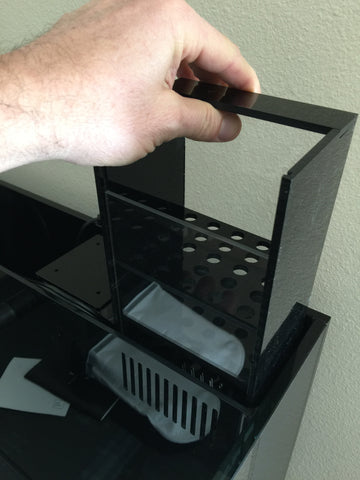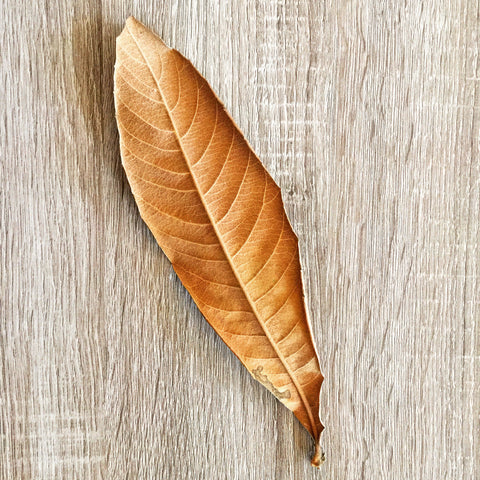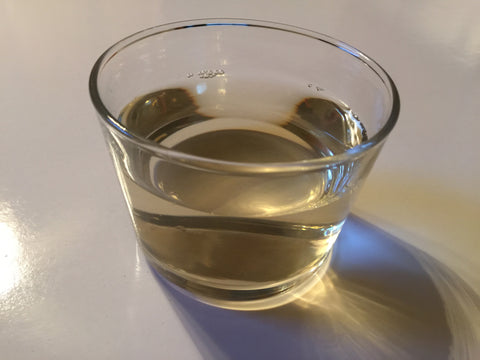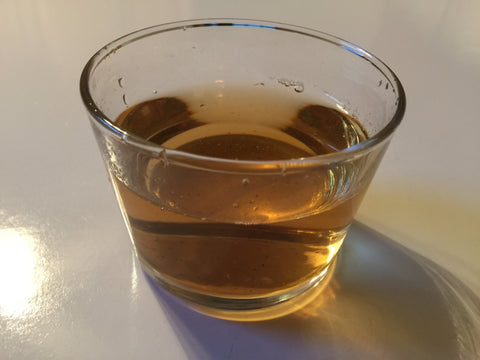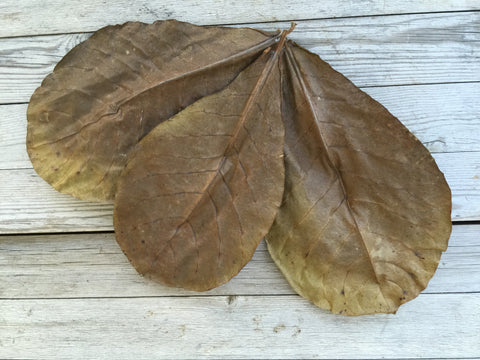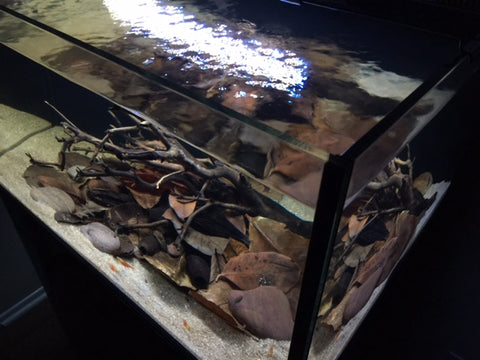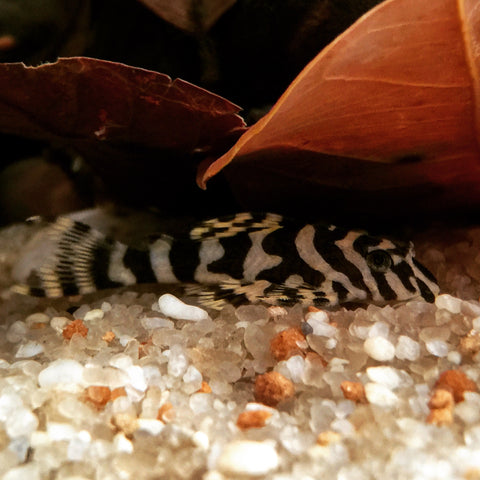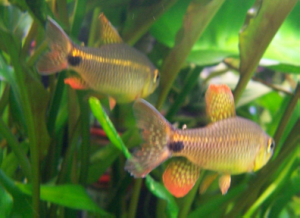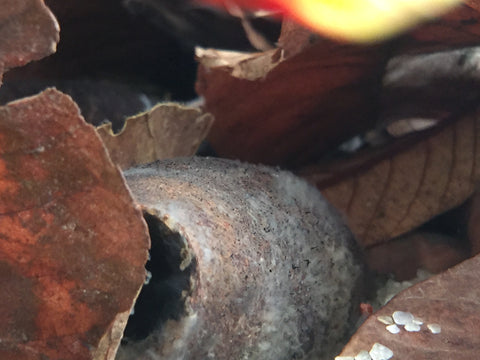- Continue Shopping
- Your Cart is Empty
All the little details
I had a good fishy friend over to my house this weekend, and we were checking out tanks, talking fish...the usual stuff you expect when fish geeks get together.
My friend brought up the subject of how we obsess over our aquariums...well, deeper than that, how, as serious aquarists, we approach our aquariums by considering every little detail.
For example, when the subject of lighting came up, my friend, one of the best reef hobbyists I know, in addition to being an all-around "waterman", pointed out that my LED lighting in my tank was set towards a far greater blue-white spectrum than made sense for a system intended to resemble a South American stream, and that the predominant colors of my fishes were reds and browns, which are accented far more by reds and greens in the lighting program. Plus, the blue tended to wash out some of the tint in the water, much to my chagrin. So, with a few simple tweaks to the light program, we have a far more superb rendition of color than ever before.
Details.
When you feed your fishes, you may love the convenience of frozen brine shrimp, blood worms, pellets, whatever, and tend to use that as your "exclusive" or primary food by a significant margin over other foods. Not always a good idea if you're feeding foods that are richer, fattier, and more difficult for fishes to digest. The idea of a well-rounded diet is really important, as fishes need a higher nutritional profile than we give them credit for to stay in top shape. And of course, different foods are better suited for different situations, such as when you're conditioning fishes for breeding, forcing growth, or helping your females recover after spawning. Each situation requires a different approach to feeding.
Details.

Thinking about stocking your aquarium has never been one of those "oh, I'll get to it later" sort of things for most serious hobbyists. Stocking is viewed as a make-or-break part of aquarium design and is rarely approached in a nonchalant manner. Nor should it be. Taking into account the type of system you're trying to create, and the various strata and microhabitats that your target fishes inhabit within the system is vital to creating a successful, healthy, interesting system in the long term. A lot of "old timers" in the hobby will tell you that many great aquariums are indeed great because they take into account the environment within the aquarium for stocking, "optimizing", if you will, available niches within the system by selecting appropriate animals.
Details.
I mean, there are so many things that you can approach in this manner...and to many, this level of attention is not tedious, obligatory, or stressful. It's simply the way to create maximum enjoyment from your hobby.
I can't tell you how much I've learned about seemingly obscure and unimportant aspects of the hobby by delving into greater detail when setting up my system, only to realize that the benefits I've reaped from this process are far, far greater than I could have imagined.
So the next time you're looking at something seemingly as "pedestrian" as two or three different filter media, take a moment to consider and reflect upon what each can bring to the table for your specific needs. Think beyond the marketing hyperbole; the hobby "hype", and consider how this stuff fits into your system. You might just find yourself making some seemingly surprising decisions when you approach these types of things from the standpoint of "why should I go with this particular one" as opposed to "I need some carbon"- or whatever.
Details.
They're not just mundane. They're not for getting "lost" in.
Details can help you create something truly special, and can make the difference between a good aquarium and a really phenomenal one.
So, roll up those sleeves, pull up a chair, and ponder a bit.
Stay engaged in the process, engrossed in the fun...
And Stay Wet
Scott Fellman
Tannin Aquatics
Advice from my father...
With my father now gone almost two years, I still think of him often. Every day, in fact.
My father started me in the aquarium hobby when I was about 3 years old. He bred fancy guppies, and my first fish were some of his fry, along with a goldfish bowl, food, and some great advice: "Feed them small amounts often, and change some of the water every few days. Watch them carefully, and you'll be able to tell if they are having any problems."
Good advice..Great advice, actually. Possibly, the best aquarium advice I'd ever received.
To this day, I apply those simple bits of advice to my aquatic efforts, with fantastic results. I will always be grateful to my father, not only for his love and compassion; not just for the advice he bestowed upon me - but for simply being there. He started me on this lifelong adventure in the aquatic realm. An adventure that would take me from the kid with a fishbowl to an owner of a truly amazing online dry goods company.
My dad knew something that was pretty remarkable: If you have a passion, share it with your children. Teach them what you know, nurture their dreams, answer their questions, and encourage them in every way.

Give your son or daughter their first fishbowl, nano-tank, baby guppies. Allow them to feel the excitement when they add that new Tetra, find that cool Angelfish they've been looking for, pick kill eggs from a spawning mop for the first time, or create that perfect aquascape.
Embrace their geeky enthusiasm.
And most of all, treasure them. You just don't know the direction your child's life might take when you give them a little push in the right direction.
Happy Fathers Day to my dad- and every dad out there!
Stay Wet.
Scott Fellman
Tannin Aquatics
From scratch...Musings on the absurdity of classifying things...
Have you ever reflected upon a garden, and felt that twinge of satisfaction, when you realize that the vegetables you've grown were from seed, completely grown-out in your garden? You know, none of those "starter" plants for you; just grown-from-seed, nurtured-with-love plants?
It's the same with an aquarium, really.

We start with an empty box, filled only with imagination and a good idea. Then, we make it a reality, adding the life forms which complete it.
And I often ponder about a completely "from scratch" aquarium.
Huh?
Like, one with just plants grown from cuttings or bulbs, fishes that I've bred, etc.
And then, I come to the realization that most of what we do in the aquarium hobby IS "from scratch"- captive bred animals, propagated plants, and collected wood, rocks, etc.
The whole term is an absurdity.
In fact, every aquarium is "from scratch", as we're the ones who select the "ingredients", assemble them, and put them together to form a whole.
So, the reality is that every aquarium is "small batch", handmade, "artisanal", etc.
And that's pretty cool, IMHO.
Stay focused on the craft, not the definition.
Have an enjoyable Saturday.
And Stay Wet.
Waxing romantic on...Magnolia leaves (literally!)
You already know that we're pretty obsessed with leaves in our aquariums, right?
One of the more recent additions to our "rotation" has been the lovely Magnolia leaf.
Yeah, the Magnolia,
Talk about an interesting subject for a botanical! The genus Magnolia has over 200 members, distributed all over Asia, the Americas, and the West Indies. It's an incredibly diverse, beautiful genus of trees.
We have offered the lovely seed pods of Magnolia for use in vivariums for some time here at Tannin Aquatics, and they've been extremely popular!

For our purposes, of course, it's important to see if the leaves are safe with fishes before we even consider using them in our aquaria, let alone, offer them for sale! If you troll online forums, you'll see the full gamut of discussions, ranging from "They killed my Apistos!" to, "I've used them for decades without any issues!" The reality is, that like any botanical or plant material used in an aquatic setting, if you prepare them, clean them, and add them gradually to your aquarium, you shouldn't have any issues.
Ahh, but I digress. More on that later.

First off, the species we're typically using here in the United States is Magnolia grandiflora, and it's a beauty! They can vary widely in color, including oranges and browns, which makes them particularly attractive for a leaf litter bed! There are over 50 cultivars of this species alone, so without being a full-on botanist, let's assume that, at least superficially, they are all more-or-less the same for our purposes. (I can hear my college Botany professor cringing right now...LOL)

Morphologically, Magnolia leaves have a distinctive look. Let's just say that, when you remove them from the context of the tree, they're downright "exotic-looking', perfect for our uses! They are rather heavy leaves, which is great news, because it means they'll last a lot longer in a submerged state, meaning that you don't need to replace them as often as you would, say, Catappa or even Guava.
They have a waxy coating which renders them more resistant to damage from salt and pollution. I'm going out on a limb and hypothesizing that it's this "waxy coating" that might be the source of some of the concerns we have about using these leaves in aquariums. The waxy covering on the leaves is called the "cuticle". It is composed of cutin, a wax-like material produced by the plant that is chemically a hydroxy fatty acid. The purpose of this covering is to help the plant retain water and repel pollutants.

Magnolia grandiflora produces phenolic antimicrobial chemicals, compounds called coumarins and sesquiterpene lactones, which discourage predation and grazing by terrestrial insects. Coumarins have known anti fungal properties. I can't help but wonder if these same antimicrobials and antifungals might-might provide some sort of benefits to fishes in a similar fashion to those found in Catappa, but this is just conjecture on my part; I am not aware of any scientific study on the matter, nor of the existence of data to confirm this theory. Let's just say that they do not seem to present any harm to our beloved aquatic pets.

Magnolias are not known to be poisonous to cats, dogs or other animals. Now, can we assume that they are safe for fishes, which would be continuously exposed to anything leaching from the leaves in the aquarium? No. However, in almost a year of personal testing, and in the experience of a number of long-term users of these leaves (whom I trust and know to be highly competent aquarists keeping many varieties of fishes), there have been no fish losses that can be attributed directly to the use of these leaves.
In my opinion, and based on the above experience of myself and others, the real danger of these leaves would be from external pollutants (soot, garden chemicals, and other surface pollutants that would accumulate on the leaves), rather than any particular issue caused by the leaves themselves. However, this doesn't mean that you should just toss them in your tank! Like any botanical, you should take the time to rinse, and really, soak the leaves overnight in (initially) warm or recently boiled water. This will help remove any residual surface contaminants and pollutants that may be present on leaves. Add only a few at a time to gauge the results. If you're going the route of collecting the leaves yourself for aquatic use, I would absolutely pass on any that are known to have been sprayed with any insecticides in recent years...That's just common sense.

As far as tannins in the leaves, these leaves seem to contain quite a good quantity of them, and you will get a good, golden-brown tint with several leaves in a relatively modest-sized aquarium! Of course, the extent to which they will tint the water depends upon many factors, like how large an aquarium you have, how many leaves you tossed in, and if you are using any chemical filtration media, like activated carbon, etc., which will remove tannins almost as fast as they're released!

On the subject of water chemistry and our good friends, the biofilms, the leaves do seem to contain a fair amount of residual sugars which will cause a bacterial bloom on their surfaces. This is especially noticeable at the tip of the stem. These will typically go away after a week or so, once the bacteria finish consuming the sugars in the leaves. In fact, many hobbyists who use these leaves never report such a bloom, but it's something to be aware of when using botanicals, nonetheless.

All the good juicy semi-scientific pondering aside, I can tell you from experience that these are awesome leaves to use in our litter beds! They are safe (if used with the aforementioned caveats), attractive, colorful, and long-lasting. I hope we have cut through some of the fear, clutter, and confusion that's propagating out there on "the interwebs" about utilizing these awesome leaves in our aquatic setups! Magnolia provides an amazing contrast to the other leaves that we use in our botanical-influenced aquariums, and I know you're going to fall in love with them as much as I have once you give them a try!
Stay open-minded. Stay creative. Do the research...
And Stay Wet!
Scott Fellman
Tannin Aquatics
Biofilm "removal machines...": Friends in the fight...
Are you one of the many hobbyists who has decided to make that jump into a new and different direction by creating a botanical-influenced aquarium?
If so, not only are you cool (yeah, I think you are), but you are now probably becoming familiar with the good, the bad, and the annoying aspects of "New Botanical"-style systems.
Today, let's focus on one of the more annoying aspects of these types of systems; something that, despite the "mental jump" we've made to this extremely different and very natural aesthetic, still gets on our nerves at times: Biofilm!
Even the name, "biofilm" conjures up imagery of some sort of gooey, smothering, and altogether unattractive stuff, which can wreak havoc with the aesthetics of your carefully planned botanical-influenced aquarium for all but the most hardcore of us "NewBo" lovers.
Let's state it again for the record (for the "umpteenth" time, too...)...These are not harmful, and are a perfectly natural thing. In fact, they're downright useful, as these are conglomerations of useful bacteria, whose "sticky" surfaces build into this matrix. However, our aesthetic sensibility as aquarium hobbyists has long ago deemed such growths as unsightly and undesirable, and, hey- I'll give you that- too much of this stuff is nasty to look at. It is, however, very, very common in rivers and streams throughout the tropical world, as you'll see if you observe any of the underwater videos and pictures on the internet of these environments.
Without revisiting what exactly these biofilms are (we've done that in a previous edition of this blog), lets just summarize that the most common biofilms we see consist of bacterial assemblages of organic material, sugars, some algae, and even fungi of various sorts. A veritable smorgasbord for aquatic animals, really.
Most common on pods and leaves are the bacterial biofilms, which, in my experience, are the most transient. They tend to ""bloom and bust" in relatively short spans of time (although it can seem like an eternity if you despise the stuff and are waiting for it to go away!).
Next are fungi, which tend to be really common on wood and pods, because these are terrestrial materials which contain significant organic materials and offer a great substrate for these organisms to grow on. You see it often on various sorts of driftwood, and it has long been the bane of many hobbyists existence! They are at times maddeningly tenacious.

Less common still (especially in relatively new aquariums) are algae, particularly filamentous varieties, such as the hated "Black Beard Algae", followed by various cyanobacteria, diatoms, and others. These tend to be nutrient-limited, and typically are brought under control through various husbandry adjustments, including use of chemical filtration media (activated carbon, etc.), stepped-up water changes with high-quality (RO/DI) water, careful feeding, stocking, and of course, physical removal.
Without delving into the control of nuisance algae and other growths, let's take a very brief, by no means comprehensive, look at some of the "biological controls" (i.e.; fishes and invertebrates) which can assist us in controlling excessive amounts of these unsightly growths in our botanical-laden systems. Keep in mind that this is not intended to be a definitive guide or a guarantee that any of these animals will do the job. I'm basing this on personal experiences that I've had, as well as other hobbyists who work with these kinds of systems:
Otocinculus catfishes- These little fishes are well-known for their love of algae. They are also known for starving to death in aquaria if they cannot find enough. I've seen "Otos" consume massive quantities of algae, and then turn their attention to biofilms. Now, they're probably going after the algal growths that are commonly bound up in biofilms, but their wrapping actions do help to dislodge the material from the surfaces they adhere to. So, all-in-all, they are more of an incidental biofilm grazer, IMHO.
Twig Cats (Farlowella sp.)- As above. These fishes are also known to be rather "compilation" in their nutrition habits; truly being algae consumers, with a little animal and other organic material being consumed from time to time. Do not purchase one of these animals with the expectation that it will demolish your biofilm "issue." Rather, add one of these interesting, endearing, long-lived (under the proper circumstances) fishes because you want one for the long term, and enjoy the "side benefit" of them occasionally jumping on some biofilms.
Loricariid catfishes- If ever there was a genus who's members were all over the map, in terms of dietary preferences and habits, this one could be it! As with the species above, the are not "scavengers", and should never, ever, EVER be purchased as "cleaning" fishes, an absurd and antiquated notion that has killed many hapless fishes over the years. Many species will eat some vegetable and animal matter that they encounter between feedings of prepared foods, and their consumption of biofilms is very much incidental at best. Nonetheless, I have seen several species of Hypancistrus, Plecostomus, and even my Peckoltia occasionally grazing deliberately on biofilms in my aquaria and those of others.
Amano and other "ornamental" Shrimp (Caridina, Neocaridina, etc.)- These are probably the one "exception" of animals on this list, in that they specifically may feed on biofilms as a large part of their diet. These little shrimp are interesting and popular for many reason, and they have that added attraction of being biofilm lovers! Now, like any animal we add when with our own agenda, they cannot be expected to rid your entire aquarium of biofilm. They are, however, superb consumers if this material, and will also aid in the consumption of decomposing leaves and the softer botanicals as well. If their other needs are met (including not having predators in the tank!), they can indeed be counted on to have some impact on biofilm. And, with at least one species hailing from Amazonia, one could conceivably have a semi-biotopic-snob-acceptable facsimile of nature...arrghhh.

Pencilfishes- Huh? Really? Yeah! I've kept a wide variety of Pencilfishes, and they seem to spend a large amount of time picking at biofilm and other material adhering to botanicals, and specifically, wood. Currently, I'm working with N. beckfordi, and they engage in this activity almost constantly throughout the day (between feedings, of course!). I am convinced that they are not specifically targeting the biofilm directly; rather, I think that they're looking for tiny crustaceans and other life forms that live in the matrix. Nonetheless, their picking distrubs the films and puts it into suspension, where it can more easily be removed by filtration. This was an unexpected "plus" of this most beloved group of fishes. Now, I must warn you, you shouldn't even consider Pencilfishes as a biofilm "control mechanism", but the collateral benefit is nice.
Headstanders- As above, although these guys are more widely known as consumers of 'aufwuchs", and include biofilms and filamentous algae as a considerable part of their diet. They can attain a fair size, and some are not the best fishes for a peaceful community aquarium. Nonetheless, I had a group of Chilodus punctatus (Spotted Headstander) that were quite adept at eating the stuff.
And of course, there is always manual removal...you know, siphon, soft-bristle brush...that sort of thing. This is more of a "band aid", and will require frequent repetition, but occasionally, you will see a successful eradication of biofilms caused by human intervention...
In the end, the most effective strategy for dealing with biofilms consists largely of patience. It's all about understanding what is going on, and appreciating what biofilms are, and understanding that they are not harmful. That being said, the aesthetic downside to biofilms definitely makes looking at strategies to keep them in check important for anyone working with botanical-influenced aquariums.
I hoep this little round-up of some of my fave "biological controls" for dealing with biofilms gives you some ideas, inspiration, and perhaps, a little basis for further discussion!
Stay engaged. Stay enthusiastic. Stay patient.
And Stay Wet!
Scott Fellman
Tannin Aquatics
Playing to your strengths...
Do you know those areas of your fish-keeping skills that, well, could use some "polishing?"

If you're like most of us, you're probably great at a few fish related things, okay at some, and well, maybe lacking in others.
I mean, I think I'm pretty good at conceptualizing cool tanks, pretty good at putting them together, making stocking decisions, and taking care of my fishes. I think I'm really good at husbandry. And I think I'm pretty weak overall at the art of aquascaping. And I could do a better job breeding fishes or getting difficult fishes to acclimate to captivity.

Now, I'm honest with myself. Other than the most basic plumbing and electrical stuff, I harbor no illusions that I'm a highly competent "Do-It-Yourself'er" in the hobby. I'm pretty good at research, execution and care in general, but stuff like the plumbing and such is what I have fish keeping friends for!

And there is nothing wrong with that. One of my takeaways from my business experience is the philosophy that you should "play to your strengths", and this has had great implications for my hobby work. I have optimized, so to speak, my hobby activities to concentrate on the things I'm good at.

You won't see me sharing pics of the amazing reef plumbing job I did, or how I set up my electronic controller to perform a variety of plant food dosings, lighting regimens, or automatic water changes. You will see how I set up off-the-shelf- equipment in an efficient manner that works for my style of fish keeping. You won't see me doing an aquascaping demo or winning contests. You will see me showing how I put together a tank with some features inspired by my research of natural habitats that works. You won't see me setting up systems for controlled breeding and rearing the rarest of fishes. You will see me talking about incidental spawning of fishes because I set up great conditions in their community tank.

And I'm perfectly okay with that. Because I know that the skills which I have perfected serve my hobby goals very, very well. They were borne of a lot of trial and error (mostly error, of course!), and humility.
Unlike in say, sports, where some people simply have natural skills or atheletic gifts that they were born with, I think fish keeping skills can be learned, acquired, and perfected. Sure, some people have innate patience, intuition, or are better at picking up subtle cues on stuff, but I am of the position that most any fish keeper can get good at almost anything in the hobby by simply putting his or her mind to it and doing!
I know that I could be a pretty good fish breeder if I made the concentrated effort to set up a system, acquire appropriate broodstock, and am willing to dedicate some time to the processes and procedures involved. Sure, I would expect that there will be some initial screwups, mistakes, and errors borne out of inexperience, such as not removing the eggs from from a pari of cichlids when it looks like they are in danger of being eaten by the parents. Or, maybe I would not immediately recognize the signs of an imminent spawn with some anabantids or what have you.

However, those are things and skills that you acquire by doing...over and over, until you learn what to expect. Most of the best fish breeders I know made numerous mistakes before they were able to get things going like clockwork. They'll tell you that anyone who is willing to invest the time, energy, and expense towards breeding fishes can accomplish great things.

Aquascaping is a popular part of the aquatic hobby, a great source of pleasure for many. With all of the "aquarium beautiful" and international aquascaping contests, the state of the art has been elevated significantly. Sure, in a competitive situation, people with true artistic skill and talent at growing or arranging plants and decorative components will have an advantage. Some of these skills may be learned, others are innate. However, aquascaping skills are a bit different, in that they are, well- subjective.

Just because Mr. "X" creates an aquascape that resonates with the majority of judges and viewers doesn't mean that he is able to only produce greatness. And you or I, with what we perceive to be "limited" skills, may never win a contest; however, we can create beautiful aquariums that speak to us and satisfy ourselves. And in the end, that is the most important thing. We don't have to define our hobby success by how others perceive us. Nor are we required to achieve a certain set of accomplishments in the hobby before we are considered "skilled."

I, for one, am far more impressed by the person who has that sort of "jury-rigged fish room" that has all sorts of cool stuff going on in it than I am at the guy who spent $100,000 to have the best of everything, or had a state of the art system designed and built for him, and then is served up as some sort of aspiration example for the hobby community. Yikes! I saw this in the reef world dozens of times. Spending a lot of money on the hobby doesn't buy success or skill. It buys stuff.
So today's simple takeaway is that you should keep doing what you're good at. You should learn new skills and try new things because you want to. Not because you feel that you have to. And you CAN acquire those skills by investing the time, energy, and effort into the process. In the end, this is supposed to be a fun hobby. And it will be, if you remember that each and every thing that you do can be enjoyable.
Stay engaged. Have fun above all.
And Stay Wet.
Scott Fellman
Tannin Aquatics
More thoughts on the dynamic of botanicals and leaves in the aquarium...
As we discuss regularly here, using leaves and botanicals in your aquaecapes is hardly a new thing. Hobbyists have been playing with them for years.
Something feels a bit different about the concept right now. Something more adventurous, exciting. And attainable.

I think that what we're starting to see more and more of is an understanding of the dynamics of botanicals, particularly leaf litter, in aquariums. An appreciation for the multiple benefits they provide (water tint, biological diversity, supplemental food, substrate for microorganism growth, and of course, a unique, natural aesthetic.).
With more and more people playing with leaves and other botanicals, we're seeing a larger "body of work", and more important, a realization that certain things will occur when you utilize them in aquariums ( such water "tinting", formation of biofilms, decomposition, etc.), just as in nature.

The mental shift taking place is because we as hobbyists understand that these types of "New Botanical"-style aquariums embrace, the occurrence of these processes, and that they are perfectly natural, not dangerous, and indeed, to some extent, controllable and manageable in the aquarium. We're not seeing "fear and loathing" of these dynamics; rather, they are becoming an understood and accepted part of the aesthetic.
We're seeing more an more aquariums that truly look like niches in the natural environment, with materials and processes being highlighted within them that are far less "sterile-looking" than what has previously been offered to us as a "natural-style" aquarium.

We see more hobbyists observing the natural environment, through photographs, videos, and even dive trips, which is providing us with more inspiration than we've ever had before....And when combined with the availability of materials to mimic these niches, you're seeing all sorts of new creativity!

For perhaps the first time, utilizing "transient" botanical materials like leaves is being seen as a legitimate aquascaping component, not just an "accessory" to an "Amazonian-themed" tank.
In other words, we are seeing hobbyists designing tanks around the concept of mimicking a leaf litter biotope, as opposed to the leave litter playing a secondary aesthetic role. Other botanicals are providing additional practical and aesthetic 'support" for these creative applications.
It's gratifying to talk to hobbyists who have known about, or even used leaves in aquariums in years past, yet are now re-examining the potential to create new, more dynamic and focused systems around botanicals. Blackwater is not just being seen as a novelty by many hobbyists.

Rather, we're seeing discussions on blackwater systems as functional, manageable aquariums for a variety of applications. As more hobbyists start examining the husbandry and management of aquarium with soft, acidic water, we're seeing a greater understanding of how filtration, water parameter monitoring, and nutrient management may be applied to these environments.

Thought is being given to fish selection, with hobbyists developing these tanks around species which are known to inhabit the leaf litter, or utilize it for feeding and/or spawning.
We're also seeing plant enthusiasts taking another look at which species are found in these types of niches, and working with them in different ways than we've seen previously.

One of the things I'm loving the most about playing with leaves is that, for a very modest cost and small effort, you can switch up a fair amount of the aesthetics by simply replacing the decomposing leaves with new ones on a regular basis, arranged slightly differently.
Since no two leaves of any type are exactly the same, you create a unique new look each time you switch things up. Different colors, shapes, textures, etc. create a diverse and dynamic aquascape.
Of course, if you're like me, you will let some of the leaves decompose, and replace them not because you're upset about a "mess"...you replace them because you love the aesthetics of new leaves, and want to keep that tint going! And, as we've mentioned before, this effectively mimics what happens in nature: as leaves decompose, they are continuously being replaced by new ones that fall into the rivers and streams, or are pushed downstream by currents.

With a greater variety of leaves and other aquatic botanicals available to our customers, and more coming soon, you'll have some exciting aesthetic options that can really help you push your aquaecapes in exciting new aesthetic and functional directions.
Be a part of this dynamic process. Stay excited. Stay creative.
And Stay Wet.
Scott Fellman
Tannin Aquatics
It takes a village...Or, maybe a community...
Ever noticed something happening in your aquarium that sort of catches you by surprise, even though, upon reflection, you realize that you should have known after years of fish keeping?
Here's a prime example of what I mean about this:
I've been slowly stocking up the 50 gallon office tank that I share here and on social media ad naseum. How slow/ Well, slow enough that the dinky little juvenile fishes that I started stocking the tank with are now not-so-dinky young adults. So, lately, I've made some more rapid and decisive stocking additions, and I've noticed something interesting.

As I add more and more fishes to the once rather sparsely-populated tank, all of the fishes are somehow more relaxed, more active...and yeah, the tank just looks better. Now, as a lifetime hobbyist, you'd think that at some point I would have made this correlation before, right?
Yeah, but I never "put 2 and 2 together", as the expression goes.
Now, there are probably a few reasons why I'm nothing the change in behaviors. First, the stocking additions of late have been additional individuals of species I already have. For example, I've "topped off" my group of Beckfordi Pencilfish to a dozen, and did the same with my Flame Tetras. These are social, shoaling fishes, so it stands to reason that the greater the number of individuals in the school, the more outgoing, relaxed, and social the fish would be, right?

Duh. Well, for some reason, I never made this correlation, which was immediately apparent even to my wife, who is a definite non-fish person. "Wow, there is so much more activity and the fish are so much more relaxed!" was here first comment on looking at the tank the other day.

And you know what? She was spot on in her observations. The fishes ARE acting more relaxed (well, hanging with your "crew" does that to you), social (hey, safety in numbers, right?), and just overall look better (okay, my recent "return to full blackwater" was part of that, I believe).
Characins, being shoaling or even schooling fishes by nature (with some exceptions, of course), simply look better, behave better, and even appear just generally more healthy when kept in more sizable aggregations. Sure, we all know a lone Neon or Pristella will skulk away in the corners and just generally fail to thrive, but I must admit, I think even having 5 or 6 of some of these fishes isn't enough. Seems like the larger the group, the more comfortable they become. I'm seeing this right off the bat with my new specimens of Crenuchus spilurus ("Sailfin Tetra") that I added in a group.

My Pencilfishes seemed to almost "welcome" the new group of juveniles of their own kind, almost like an older kid takes to the young neighbor across the street that wants to tag along everywhere. They occasionally will keep the enthusiastic little ones in line with a well placed shove or little chase when needed, but for the most part, it's been good for all of them, as they go about their solitary business of picking "aufwuchs" from the wood and botanicals, then join up as a shoal at various times throughout the day. A definite pecking order has developed, with the group seemingly looking after each other. Interesting stuff, and I've observed it long enough to know that I'm not anthropomorphizing this behavior!

I mean, sure, it's been known for years that some fishes do better in schools or groups, but I sometimes wonder if we make those groups large enough, ya know? Sure, it's okay to keep smaller groups, but I'm realizing, when scanning my fish keeping memories over the years, that "shoaling fishes" always did better in pretty sizable shoals...like 10-15 and up.
So...I think it goes without saying that, with few exceptions, the shoaling fishes I will keep in the future will be kept in much larger groups, because, as they say, it apparently does "take a village..."
Look at the obvious, and look again. Stay focused. Think creatively.
And stay wet.
Scott Fellman
Tannin Aquatics
If you build it...
So today, I'm almost playing "devil's advocate" from my piece earlier in the week about slowing down and holding off until you can do something right! This piece might sound downright hypocritical in comparison, but it's dealing with the act of doing, rather than theorizing. A little different than "waiting until you can do it right", but tied together, nonetheless.
Here's the crux of my idea:
Don't overthink stuff. Take your initial idea, build it, and improve it over time. Nothing is permanent. You can make it better later.
Yeah. In other words, don't get lost in the planning, the worry over every single thing being perfect. True, use quality equipment and great technique; however, with those items accounted for, proceed...don't get lost in planning. You can evolve it once it's up and running.
So, actually, there is a difference between slowing down to do it right the first time, in terms of equipment, and executing rapidly on a new concept.

Yes, planning is definitely required; you can't stumble blindly into something. On the other hand, if you have an idea that you want to execute, don't put yourself into that "analysis paralysis" role, filed with "I'm gonna do this..." and "Well, I need to consider____________". That stuff will handcuff you.

If you have the idea, and it's basically sound, dive into it and DO it, instead of committing to endless feasibility studies and considerations of every possible angle. I've been down that road, and the unintended side effect is frustration, trust me!
Besides, it's hard to show off what "your gonna do" to your fellow fish geeks, right?
Today's short and sweet musings..
So go out there and DO it!
And..
Stay Wet.
Scott Fellman
Tannin Aquatics
Back to black(water)...A "homecoming" of sorts...
Isn't it always nice to return to something that you know, love, and enjoy?
Don't get me wrong- journeys to strange and new places are awesome; however, there is indeed some sort of "comfort" in returning to the familiar...even if that "familiar" may be considered "out there" by many others!
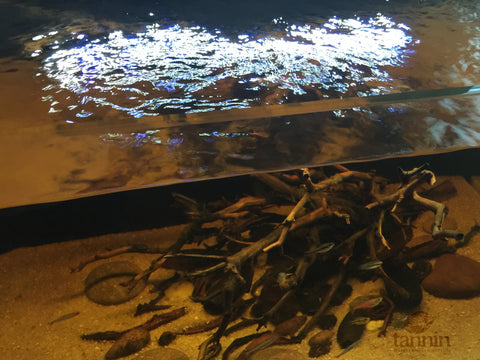
Such is the case with me...Remember the "demonstration" I've been doing with our office display tank over the past couple of months? We were showing that you can have tons of leaves and botanicals in a an aquarium while still keeping the water in that "blue-white" mode that the majority of the fish keeping world seems to fancy. With good water management, and the help of activated carbon(!), we kept this water as bright and clear as any "mainstream" aquarium could be.
Except, of course, it had a bottom covered with leaves.

Well, I'm happy to say that the Great Experiment has run it's course. I've yanked the carbon in favor of less "aggressive" tint-removing filter media (Poly Filter and a small quantity of Purigen, passively employed in my Innovative Marine aquarium's media cart. These media provide removal of the metabolic wastes within the system, but seem to have little effect at removing the tint that we covet so much around here!
So, having seen "both sides of the fence" in the same tank, I think I can make some observations. I'll do my best to avoid any biases in my findings, lol.
First off, I can tell you that I did enjoy the contrast of the dark leaves with the bright, clear water. Colors did pop; it was an interesting aesthetic. The pH was the same as when the water was tinted- 6.6.
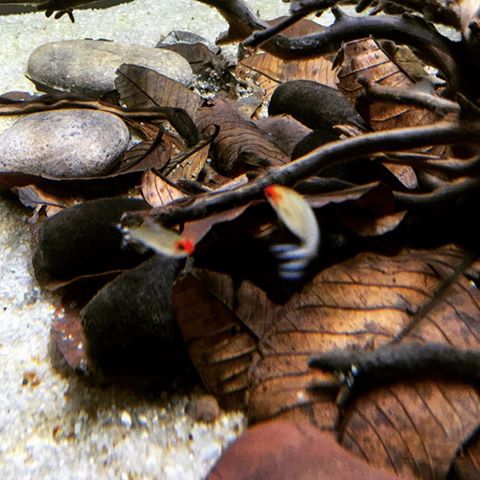
In fact, you might recall that during this "clearwater" phase, this is when the first spawning of my Rummynose Tetras and Beckford's Pencilfish occurred! There has been another spawning even with the Pencilfish since the water has returned to its "tinted" aesthetic.
Here are two significant things that I've noticed since the tank has returned to its tinted glory:
1)The colors of the fishes, particularly the reds, have deepened and intensified. My Pencilfish display the characteristic red on their fins and purplish hue on their flanks which they were not displaying during the "clearwater" phase.
2)The fishes overall appear more "relaxed", with slower, deliberate swimming. Obviously with less light penetration into the water column, one would expect that the fishes would feel more secure and calm, which they appear to!
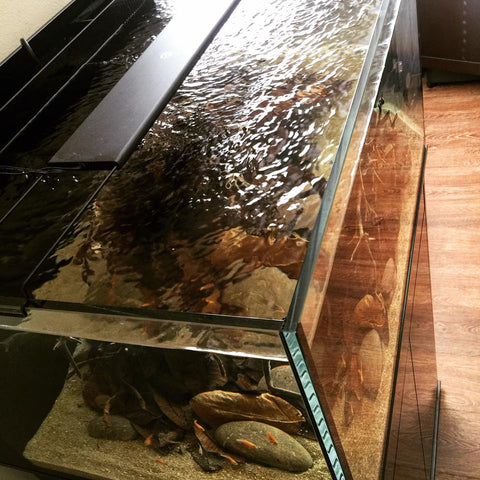
From a purely operational standpoint, there is, in my opinion, little difference between the "clear water" and "blackwater" phases, except, of course, the color. With sounds maintenance and an understanding of the environment, it's relatively straightforward to maintain a blackwater aquarium, in my opinion.

One experiment I may try next is to utilize some live plants- I'm not 100% sure which yet...maybe Salvinia and Myrophyllium, but we'll see- to create an even more interesting aesthetic. I realize that with blackwater, light penetration is different. I will, being the reefer that I am, take PAR readings before attempting this, so we can compare to the PAR readings I obtained from "clear" water.
Another "management shift" that I have done is to incorporate more Catappa, Loquat, and now, Jackfruit and Magnolia levels into the scape.
In addition to being larger, and adding different colors to the scape, specifically oranges and yellows (a nice contrast against the predominantly dark brown of Catappa), many of these leaves have the added benefit of being a bit more durable and lasting for a longer period of time while submerged in the aquarium. During the "clear water" phase, the scape was dominated by Guava leaves, which, as we've demonstrated previously, impart noticeably less coloration to the water than Catappa.
As indicated above, I'm starting to use slightly less, yet larger leaves, as I feel they last longer, impart more "tannins per square millimeter" (purely conjecture, lol), and they create a slightly different aesthetic.
I'm really liking the "Raja Ampat XL Catappa Leaves" collected for us by Jake Adams in Raja Ampat, Indonesia. They can really unleash some tannins! And they hold up several times longer than the smaller, thinner Catappa leaves I use!
It really didn't tale all that long to get the water back into it's "blackwater mode", maybe over the course of a few days. I "reloaded" on leaves, and sort of "stopped" at the color I like.
An interesting side note/observation about leaf litter tanks, as I've noted previously, is that it's always changing. Some leaves are in various states of decomposition, softening, color change. And the neat thing is that you can create this incredibly dynamic, ever-changing aquascape by simply replacing leaves. You can create all sorts of nooks and crannies" within the leaf litter bed, offering your fishes hiding places, spawning areas, and zones to forage.
I'm about to add some specimens of my all-time favorite characin, Crenuchus spilurus, the "Sailfin Characin", a noted benthic leaf litter dweller, to my aquarium, and I'm really looking forward to seeing how they utilize this habitat, along with my favorite little Farlowella "Twig Catfish."
I'm also using a lesser diversity of botanicals in this tank, purely for the reason that my aesthetic tastes have evolved and changed over the months since this tank has been in operation. Right now, the mix includes Savu Pods, Coco Curls, Heart Pods", "terra Sorrindo", and "Lampada Pods", all subtly integrated into the mix. No one botanical dominates the scape, and the materials have been distributed spatially throughout the display. Manzanita wood and smooth river stones round out the hardscape.
Oh, and the continuing discussion about "taking 'em out or leaving 'em in" with regards to leaves? It's still your call. I've seen no negative water quality issues associated with leaving the decomposing leaves in. However, my aquarium is scrupulously maintained, understocked, has excellent circulation and gas exchange, and doesn't have accumulations of uneaten food and other debris within the leaf matrix, as I siphon weekly during my routine water changes. And I tend to "top off" and/or replace significantly decomposing leaves regularly. Not because I feel they pose some health issues. Rather, because I like the ability to change stuff up!
And, with some of the new varieties and selections of leaves we're going to be releasing in the coming months, you'll probably want to do the same! The beauty of a blackwater tank, with a variety of leaf litter, is that it give you, the aquarist, an opportunity to enjoy an ever-evolving, ever changing, biologically rich and aesthetically pleasing aquarium experience.
Yeah, it's fun to go away...but it's nice to come home again!
Stay engrossed. Stay creative.
And Stay Wet.
Scott Fellman
Tannin Aquatics






























